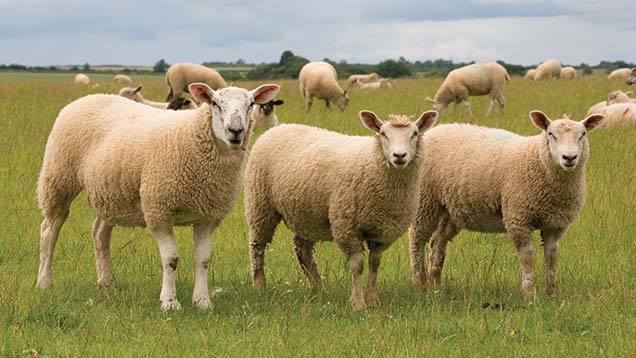Advice for finishing leftover prime lambs
 © Tim Scrivener
© Tim Scrivener Sheep farmers should make decisions about finishing leftover prime lambs now or they will risk denting next year’s lamb crop.
That is the advice from independent sheep consultant Lesley Stubbings, who says those who don’t budget for feed and calculate finishing costs will lose out at lambing next year.
“You must have a plan. If you don’t, the losers will be the ewes. They should take priority or you will risk having a poor lambing crop the next time round. That is a mistake a lot of people have historically made,” Ms Stubbings says.
“The first step should be to condition score ewes and work out how many kilogrammes of dry matter is needed to get breeding sheep fit for tupping and maintain them throughout pregnancy,” says Ms Stubbings.
See also: How to prepare a feed budget
If farmers haven’t got enough feed available, they may need to consider selling the smallest lambs as stores or feeding cereal or supplementary silage, if they have a plentiful supply for the winter.
But this will depend on the weight of lambs, says Ms Stubbings, who advises weighing lambs and splitting them up into three groups: short-, medium- and long-term.
Short-term lambs
Weight range: More than 35kg
Total gain: 7kg
Finishing period: One month
Target growth/day: 250g
Feeding options: Good-quality silage aftermaths or red clover leys, topped up with concentrate, depending on the quality.
“Obviously grass quality has dropped off, so now is the time to think about adding a little bit of concentrate. But introduce it carefully,” warns Ms Stubbings.
She says farmers shouldn’t feed more than 50-100g/head of concentrate to begin with.
“Gradually build it up so the risk of anything gorging itself is minimal.”
Medium-term lambs
Weight range: 30-35kg
Total gain: 7-12kg
Finishing period: 10-12 weeks
Target growth /day: 100-140g
Feeding options: Grass and forage crops
“You need a plan for these lambs. They still need to be on reasonable grazing before moving on to forage crops.
“Don’t let them lose weight, because that is going to be expensive.” Instead she says the target growth rate should be a minimum of 100g/day.
Long-term lambs
Weight range: Less than 30kg
Total gain: 12-18kg
Finishing period: 12 weeks plus
Target growth/day: 80–100g
Feeding options: Low-cost feed (grass or stubble turnips)
Ms Stubbings says as a first step farmers should question why they have such small lambs.
“Were they smaller because they were born later or have they had disease problems? You need something cheap to put them on.
“Ask yourself what is available to keep them going, or whether it is better to bail out and sell them as stores.”
Ms Stubbings suggests doing a sensitivity analysis with these lambs.
“If you have lambs that are 20kg and you need to put 20kg on them, you need to work out how much that is going to cost you and be comfortable that the market price [next year] will pay more back or be prepared to take the risk,” warns Ms Stubbings.
She says farmers should work out a minimum price these sheep must make in order to break even and should also take into account a lamb mortality of at least 3%.
Worm control
Good health protocols and regular weighing is essential to ensure they are on target, says Ms Stubbings.
Worm control will be critical in lambs in the coming weeks, due to the unprecedented rain and warm temperatures, she adds.
“Worm burdens are going up rapidly at the moment. Where it was dry earlier on the worms are making up for it now and worm burdens will make a significant difference to lamb weights.
“Make sure you are getting feedback from the abattoir to see if lambs had fluke in their livers.”
Ideally producers should be monitoring faecal egg couns and should implement a control programme on the advice of their vet.
But she advises farmers to check meat withdrawal periods to avoid interrupting the sale of short-term keep lambs.
Should you sell stores?
Mike Davies, auctioneer from Monmouthshire Market, believes there is an opportunity for farmers to make good money by selling lighter lambs as stores in the coming weeks.
“The demand for lighter lambs seems to have held up better than bigger lambs,” says Mr Davies.
See also: Keep up to date with the latest market prices
Mr Davies says the best store lambs have been selling for £60/head – nearly as much as 40kg fat lambs.
He believes this is being driven by demand from store sheep finishers seeking lambs to run on as hoggets this autumn.
“What people are looking for are ones with a bit of frame that will put on weight rather than fat.”

